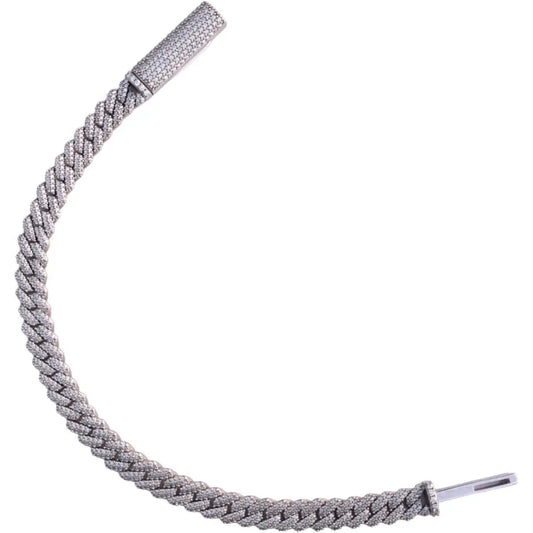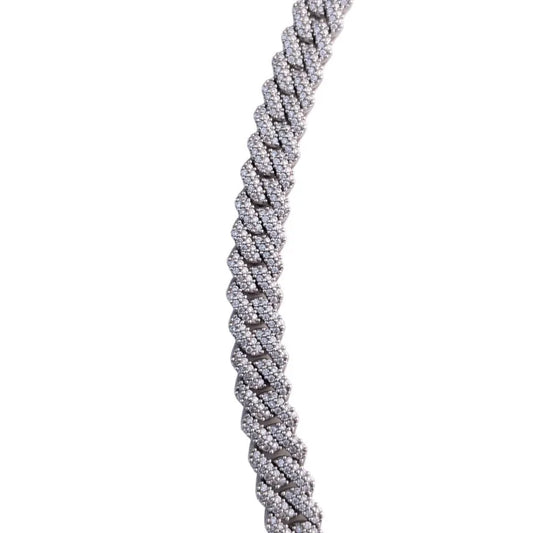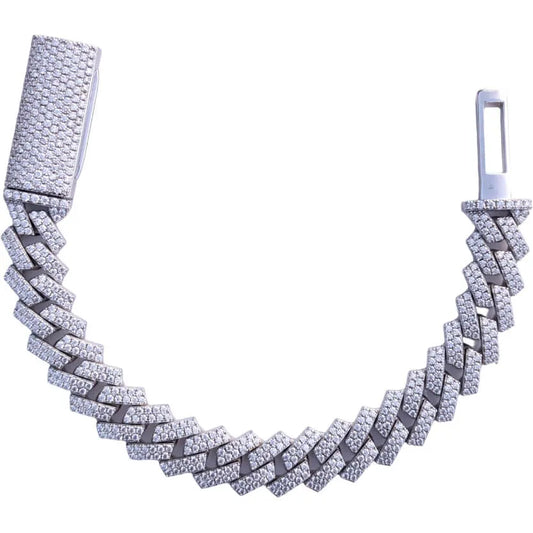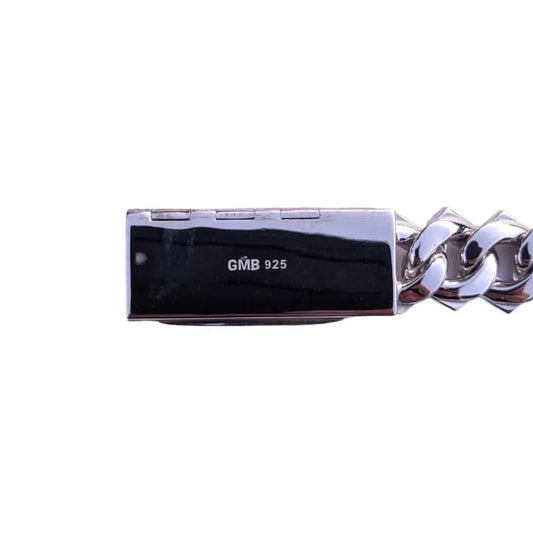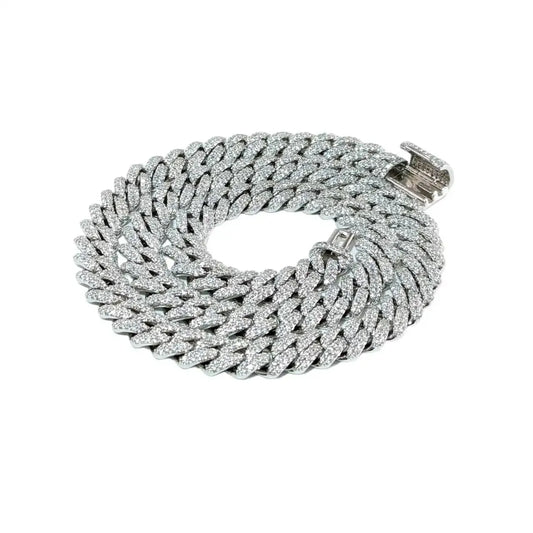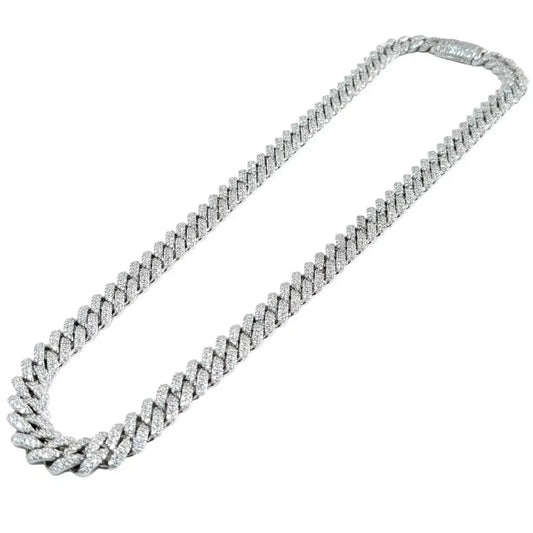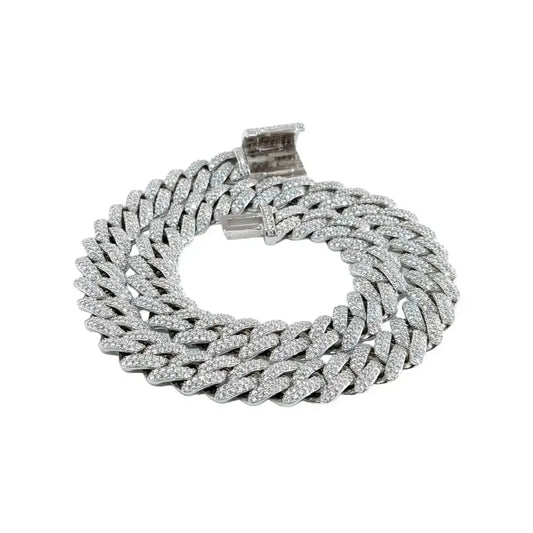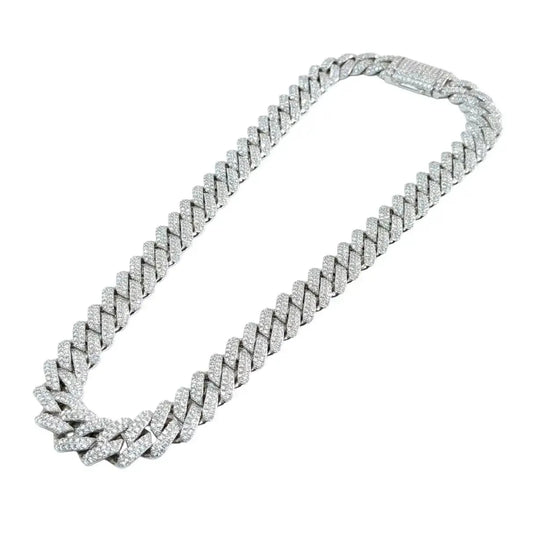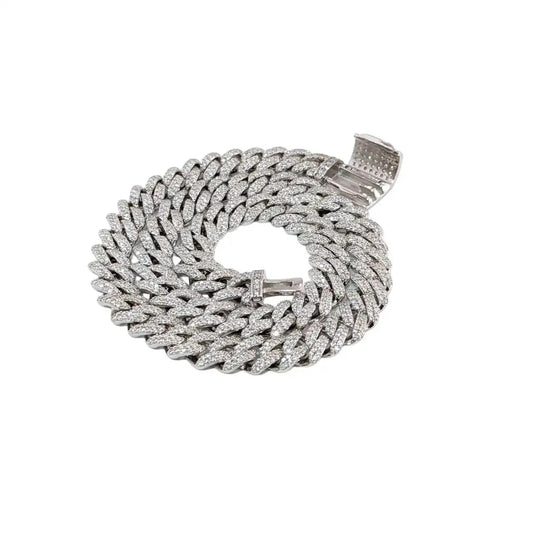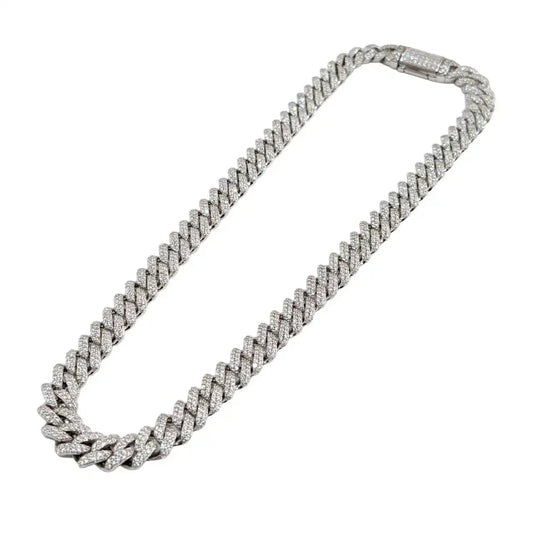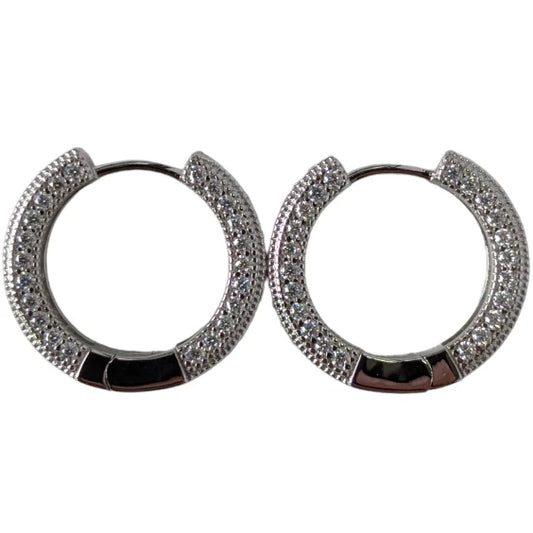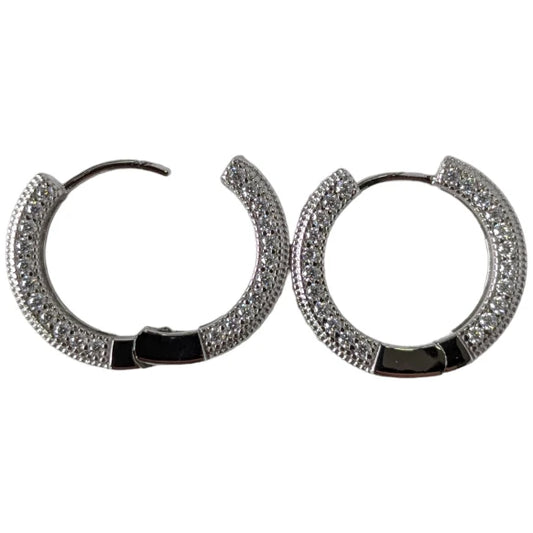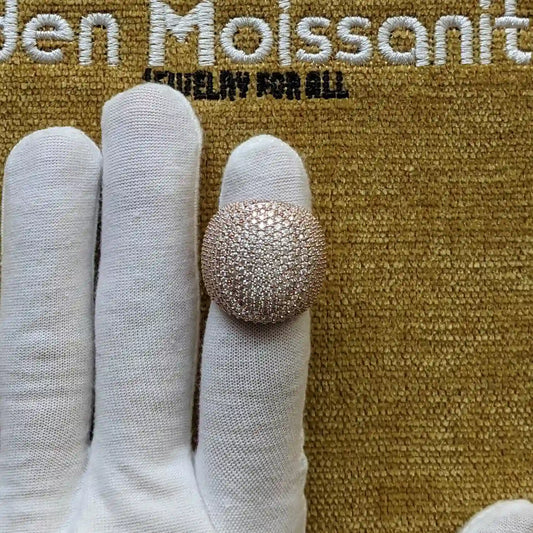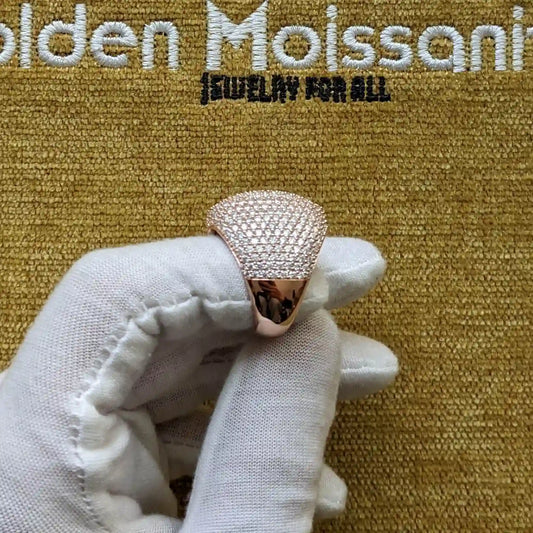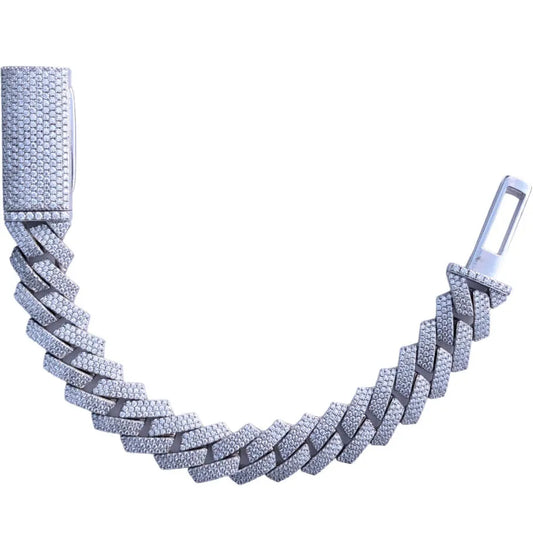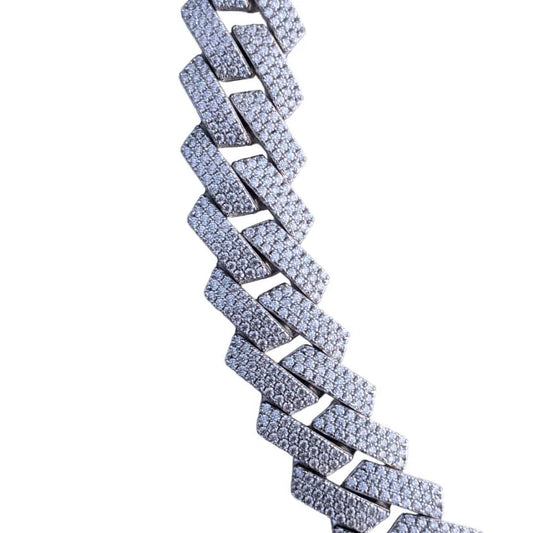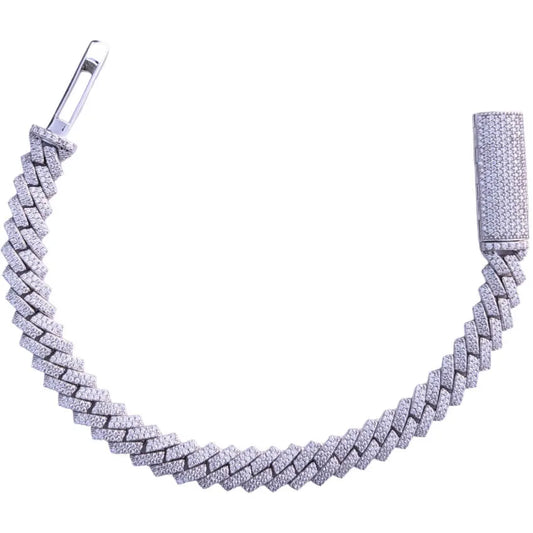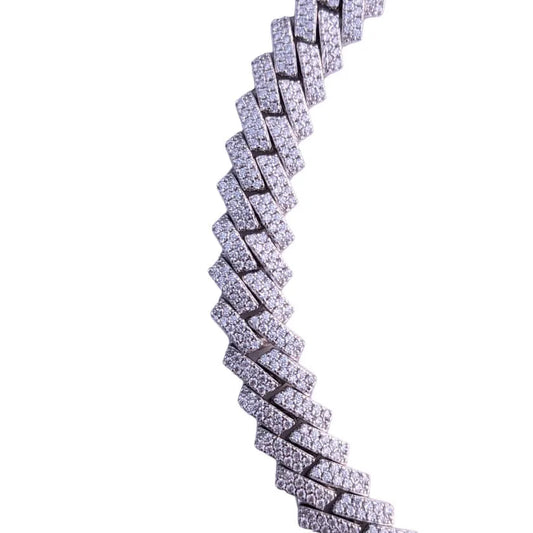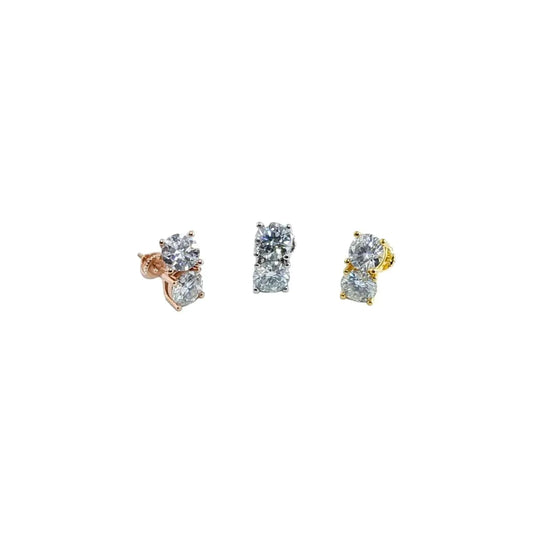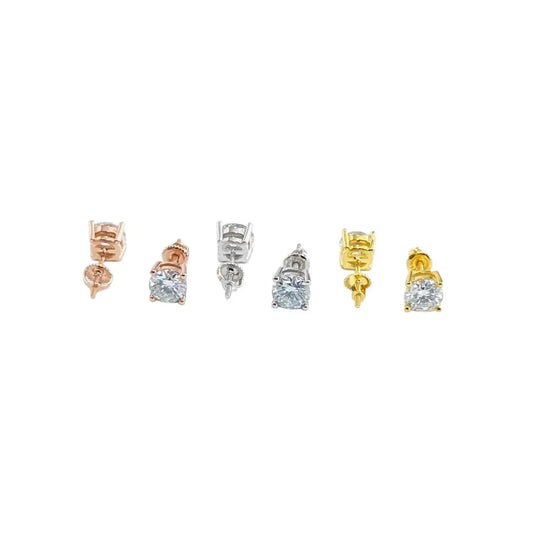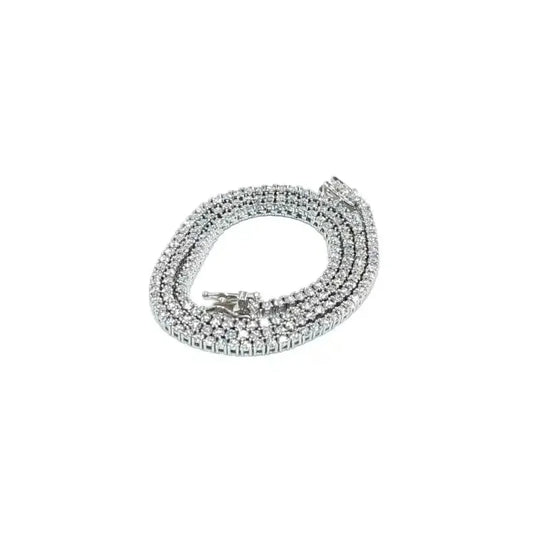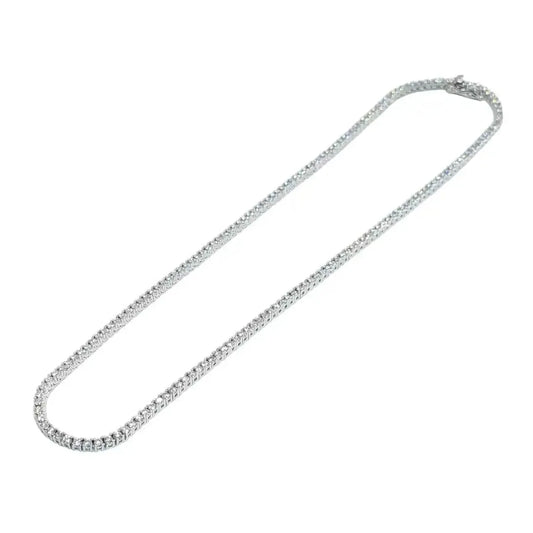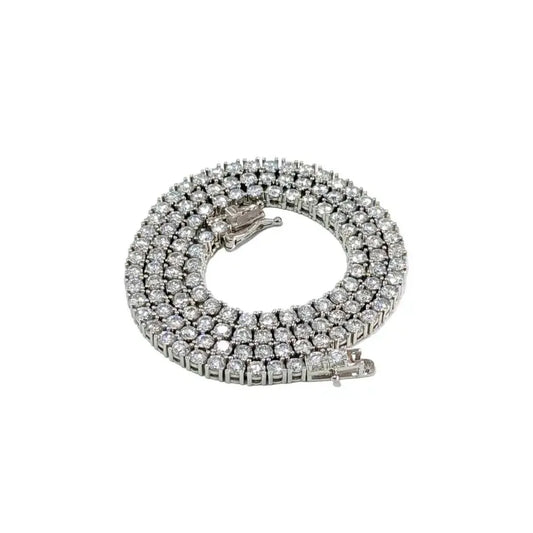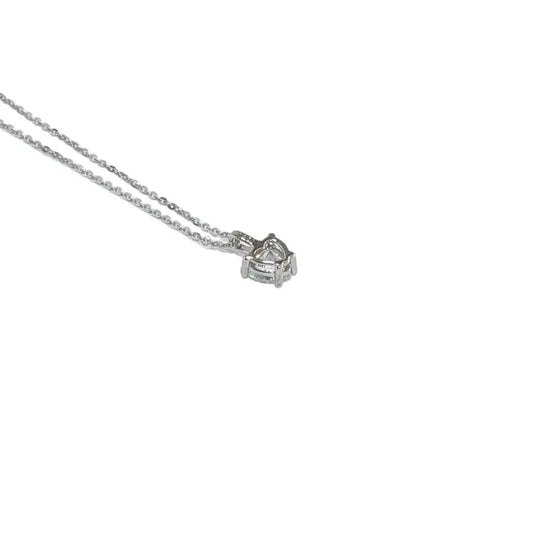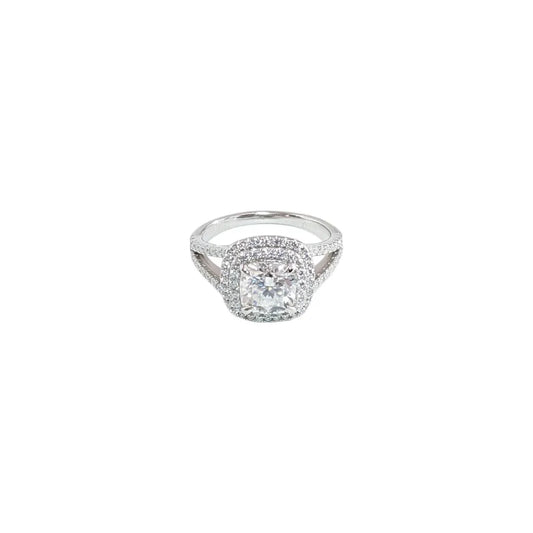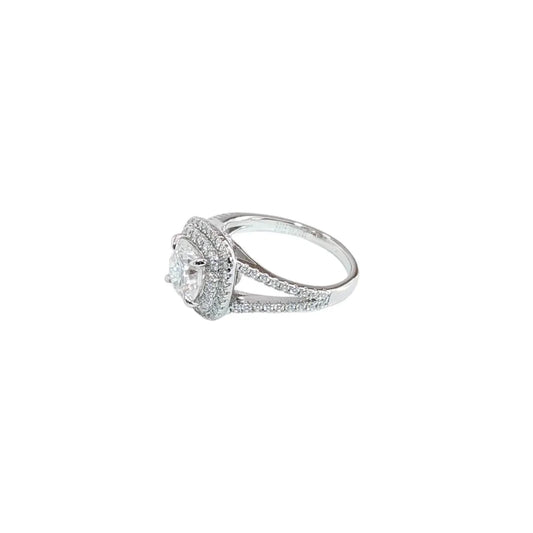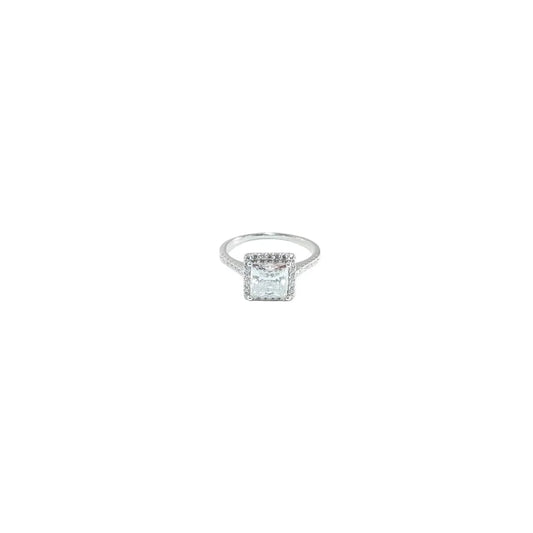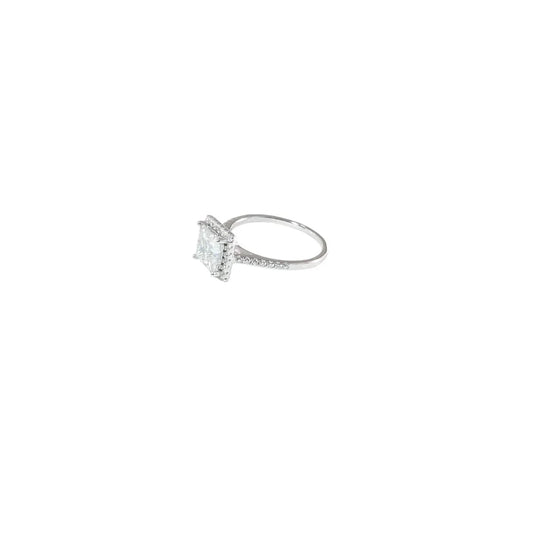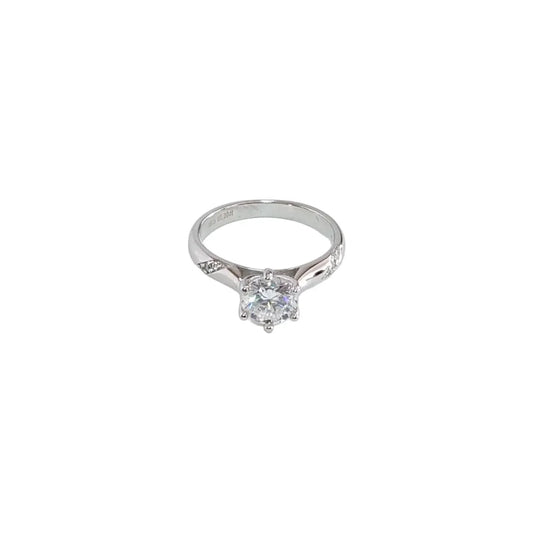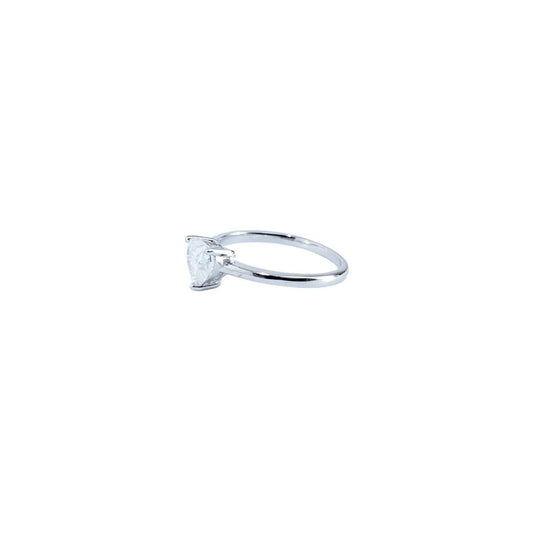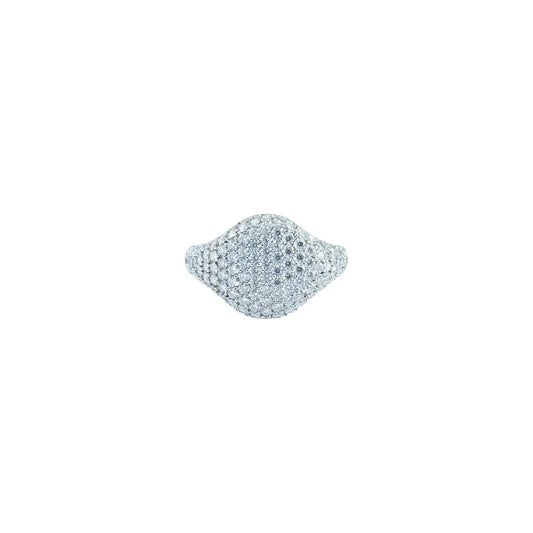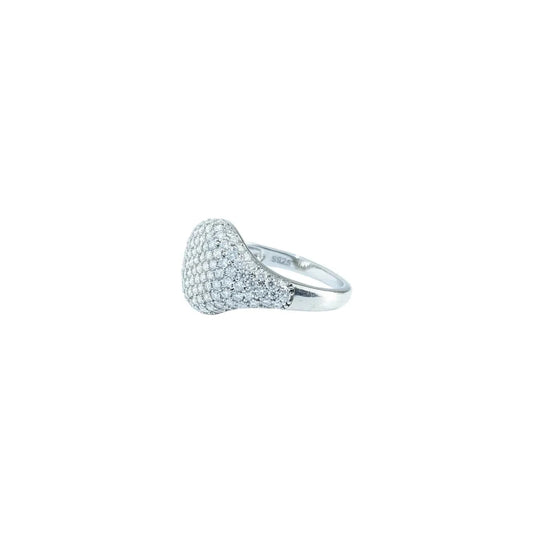Frequently Asked Questions
* The only stone we use for our jewelry is moissanite *
GENERAL QUESTIONS ABOUT MOISSANITE
What is moissanite?
Moissanite is a mineral composed of silicon carbide. It was discovered in 1893 by the scientist Henri Moissan, hence its name. In jewelry, moissanite is often used as an alternative to diamond.
Is moissanite a natural or synthetic gemstone?
Moissanite used in jewelry is generally synthetic, created in a laboratory. Synthetic moissanites have similar characteristics to natural moissanites, but they are produced in a controlled manner.
Does moissanite change color over time?
Generally, moissanite should not change color over time under normal use. It is known for its chemical stability and resistance to color changes due to environmental influences.
Are there any environmental benefits to choosing moissanite over traditional gemstones?
Some consider that moissanite may offer environmental benefits over traditional gemstones, particularly if produced in a laboratory. It can reduce the impact of mining associated with other gems.
How does moissanite compare to diamonds in terms of hardness and brilliance?
Moissanite is very close to diamond in terms of hardness. On the Mohs hardness scale, diamond is rated 10, while moissanite is around 9.25. In terms of shine, moissanite can exhibit higher light dispersion, creating flashes of color.
QUESTIONS ABOUT SILVER JEWELRY
What is sterling silver?
Sterling silver is a silver alloy typically containing 92.5% pure silver and 7.5% other metals, primarily copper. It is the most common type of silver used in making silver jewelry.
Can silver jewelry cause skin allergies?
In general, sterling silver jewelry is well tolerated. However, some people may be sensitive to copper, which is often present in the alloy. Nickel, if used, can also cause allergic reactions in some people.
Why does silver tend to tarnish?
Silver tends to tarnish due to oxidation. Exposure to air, moisture, chemicals and sulfur gases can cause a layer of oxidation to form on the surface of silver, resulting in a dull color.
Can you wear silver jewelry every day?
Yes, sterling silver jewelry is generally suitable for everyday wear. However, avoid wearing them during activities that could damage them, such as strenuous sports.
How do I clean my silver jewelry?
You can clean your silver jewelry using a solution of warm water and mild soap with a soft-bristled brush. Silver polishing cloths are also effective in removing tarnish.
QUESTIONS ABOUT GOLD JEWELRY
What is 24 carat gold?
24k gold is considered 100% pure gold. However, in practice, it is rare to find jewelry made from 24k gold due to the tendency of pure gold to be too soft for jewelry making. Gold is often alloyed with other metals to increase its hardness.
What is white gold?
White gold is a gold alloy usually containing silver, palladium or nickel. It is often plated with rhodium to give it a whiter appearance and improve its corrosion resistance.
Can gold tarnish?
Unlike silver, gold does not tarnish. However, it can lose its natural shine over time due to the buildup of dirt, lotions, and other substances. Regular cleaning can restore its shine.
Can gold jewelry cause skin allergies?
Pure gold is hypoallergenic, but allergies can occur if gold is alloyed with metals like nickel. Opting for 18k gold or higher can reduce the risk of allergies, as these alloys contain a higher proportion of pure gold.
How to maintain gold jewelry?
To care for gold jewelry, clean it regularly with a mild soap and water solution. Avoid contact with harsh chemicals and remove them during activities that could damage them.
QUESTIONS ABOUT JEWELRY QUALITY
How to assess the quality of diamonds in jewelry?
The quality of moissanite is assessed based on the 4Cs: color, purity, cut (size and proportions), and carat weight. These characteristics determine the shine, clarity and value of moissanite.
What is the hallmark on a piece of jewelry and how important is it for quality?
The hallmark on a piece of jewelry is a mark that indicates the quality of the metal. For example, the “925” hallmark on silver indicates that the alloy is 92.5% pure silver. This is an indication of the quality of the metal.
How can I assess the overall quality of a piece of jewelry?
Evaluate the overall quality of a piece of jewelry by considering aspects such as the metal used, gem quality, design, finish, and brand. A quality hallmark, careful workmanship and attention to detail are important indicators.
What certifications can guarantee the quality of jewelry?
Some jewelry may come with quality certificates, particularly for diamonds. For example, a GRA (Gemological Research Association) certificate for a diamond provides detailed information about its characteristics.
How to ensure the quality of jewelry?
When purchasing jewelry online, look for detailed descriptions, high-resolution photos, clear return policies, and customer reviews. Reputable sites often provide comprehensive information about the quality of their jewelry.
QUESTIONS ABOUT SIZING AND FITTING
How do I determine my ring size?
The most accurate method is to measure the circumference of your finger using a jeweler's measuring tape. You can also use an existing ring that fits you well as a reference or consult a professional jeweler to measure your ring size.
How to adjust the size of a ring?
The size of a ring can be adjusted by adding or removing metal. This can be done by a professional jeweler. However, some rings with gemstones cannot be resized easily, so it is important to choose the right size from the start.
Are all necklaces a standard size?
No, necklace lengths may vary. Necklaces come in different lengths, usually measured in inches or centimeters. Common sizes include the choker necklace, princess necklace, matinee necklace, and opera necklace, among others.
How do you know if a bracelet is the right size?
A well-fitted bracelet should be comfortable without being too tight or too loose. You can measure your wrist circumference or try different bracelets to find the one that fits best.
What is the standard length for a choker necklace?
A choker necklace is typically 14 to 16 inches (35 to 40 cm) in length, although this can vary depending on style and personal preference.
QUESTIONS ABOUT PAYMENTS AND SECURITY
How can I ensure my payment information is secure when purchasing online?
Make sure the site uses a secure connection (https://), check the reputation of the site, and favor secure payment platforms. Never share your credit card information over email and use strong passwords.
What are the commonly accepted payment methods when purchasing jewelry online?
Commonly accepted payment methods include credit cards (Visa, MasterCard), debit cards, bank transfers and e-wallets.
How do I recognize a secure jewelry website?
Look for "https://" in the URL, a padlock in the address bar, and positive customer reviews. Reputable websites will also mention their security and privacy protocols.
What steps can I take to avoid online credit card fraud?
Monitor your credit card statements regularly, report suspicious activity to your bank, use strong passwords, and avoid transactions on unsecured or questionable sites.
How do refunds and guarantees work for jewelry purchases?
Refund and warranty policies vary between sellers. It is essential to read these policies carefully before making a purchase to understand the return and refund conditions.
CUSTOMER SERVICE QUESTIONS
How can I contact the customer service of an online jeweler?
Online jewelers usually provide contact details such as telephone numbers, email addresses or contact forms on their website. Some also offer live chat.
How do returns and exchanges work with customer service?
Returns and exchange policies vary. Customer service can guide you through the process, provide you with a return label and inform you of the deadlines and conditions for returning or exchanging a product.
What are the fastest communication channels with customer service?
Live chat, phone, and email are often quick communication channels. Social media can also be used to contact customer service in some cases.
What information is important to include in a customer service request?
Include your name, order number, a detailed description of your question or problem, and any relevant information. Be clear and precise to facilitate the processing of your request.
How do you know if an online jeweler's customer service is reliable?
The reliability of customer service can be assessed by reading customer reviews, checking for the presence of online support, examining the clarity of return policies, and observing responsiveness to requests.
QUESTIONS ABOUT RETURNS AND EXCHANGES
How do returns generally work for online jewelry?
Return policies vary, but in general you should be able to return jewelry 30 days after purchase.
Are there any items that cannot be returned or exchanged?
Yes, some jewelry, especially those personalized or with signs of wear, may not be eligible for return or exchange. Always check the jeweler's specific conditions.
What is the usual time frame for receiving a refund after a return?
Refund times vary, but most online jewelers process refunds within a few days of receiving the return. However, it may take longer for the refund to appear in your account.
What are the return policies for personalized jewelry?
Personalized jewelry may not be eligible for return or exchange because it is specially designed for you. Check the jeweler's policies carefully before purchasing personalized jewelry.
How can I ensure a hassle-free return or exchange?
Read the jeweler's return policies carefully before purchasing, keep all original paperwork and packaging, and follow the return process instructions to ensure a trouble-free transaction.
QUESTIONS ABOUT ORDERS AND DELIVERY
How can I place a jewelry order online?
To place an order online, select the items you wish to purchase, add them to your cart, then follow the checkout process by providing the necessary information.
How can I track my order?
Most online jewelers send a confirmation email with a tracking number once your order has been shipped. You can use this number to track your order on the carrier's website.
How can I change or cancel my order after placing it?
The possibilities for modification or cancellation depend on the order status and the jeweler's policies. Contact customer service as soon as possible to discuss your options.
What are typical delivery times?
Delivery times vary depending on the shipping method chosen and the destination. Standard deliveries can take anywhere from a few days to a few weeks.
What should I do if my jewelry order is damaged upon receipt?
Take photos of the damage, contact the jeweler's customer service immediately, and follow the instructions to return or exchange the damaged product.
FOLLOW OUR PROMOTIONS!
SUBSCRIBE TO OUR EMAILS TO STAY INFORMED OF THE LATEST NEWS & PROMOTIONS!
MEN’S COLLECTION
-
6mm Moissanite Cuban Bracelet
REGULAR PRICE FROM $140.00 CADREGULAR PRICE$0.00 CADSALE PRICE FROM $140.00 CAD -
12mm Moissanite Cuban Bracelet
REGULAR PRICE FROM $300.00 CADREGULAR PRICE -
10mm Moissanite Cuban Chain
REGULAR PRICE FROM $580.00 CADREGULAR PRICE -
14mm Moissanite Cuban Chain
REGULAR PRICE FROM $950.00 CADREGULAR PRICE -
8mm Moissanite Cuban Chain
REGULAR PRICE FROM $530.00 CADREGULAR PRICE -
13/20mm Moissanite Hoop Earring
REGULAR PRICE FROM $110.00 CADREGULAR PRICE$0.00 CADSALE PRICE FROM $110.00 CAD -
Oval Moissanite Ring
REGULAR PRICE $350.00 CADREGULAR PRICE -
14mm Moissanite Cuban Bracelet
REGULAR PRICE FROM $400.00 CADREGULAR PRICE -
8mm Moissanite Cuban Bracelet
REGULAR PRICE FROM $200.00 CADREGULAR PRICE -
1 Carat 4 Prong Moissanite Earring
REGULAR PRICE $120.00 CADREGULAR PRICE$0.00 CADSALE PRICE $120.00 CAD
WOMEN’S COLLECTION
-
13/20mm Moissanite Hoop Earring
REGULAR PRICE FROM $110.00 CADREGULAR PRICE$0.00 CADSALE PRICE FROM $110.00 CAD -
1 Carat 4 Prong Moissanite Earring
REGULAR PRICE $120.00 CADREGULAR PRICE$0.00 CADSALE PRICE $120.00 CAD -
2mm Moissanite Tennis Chain
REGULAR PRICE FROM $280.00 CADREGULAR PRICE$0.00 CADSALE PRICE FROM $280.00 CAD -
3mm Moissanite Tennis Chain
REGULAR PRICE FROM $350.00 CADREGULAR PRICE -
1 Carat Heart Cut Moissanite Necklace
REGULAR PRICE $140.00 CADREGULAR PRICE -
2 Carat Cushion Cut Double Band Moissanite Ring
REGULAR PRICE $280.00 CADREGULAR PRICE -
2 Carat Moissanite Princess Cut Ring With Side Stones
REGULAR PRICE $220.00 CADREGULAR PRICE -
1 Carat Moissanite Ring With Side Stone
REGULAR PRICE $130.00 CADREGULAR PRICE$0.00 CADSALE PRICE $130.00 CAD -
1 Carat Heart Cut Moissanite Ring
REGULAR PRICE $140.00 CADSALE PRICE $140.00 CAD -
Pave Hexagonal Moissanite Ring
REGULAR PRICE $160.00 CADREGULAR PRICE


